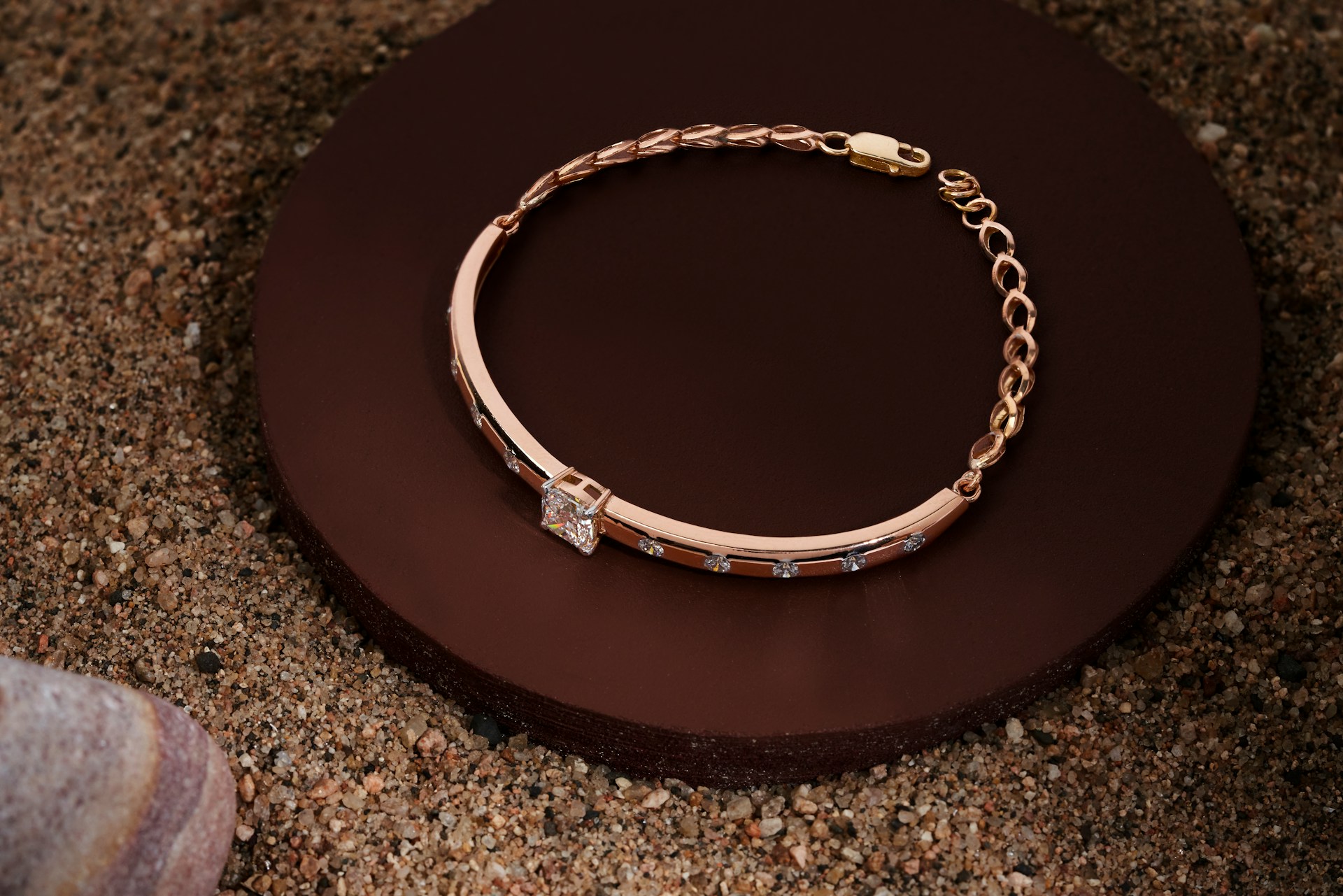A customised bracelet is more than just a piece of jewellery. It often carries a personal story or sentimental value that sets it apart from something mass-produced. Whether it’s a gift from someone close or a treat for yourself, it’s something you wear with pride. That’s why it’s so frustrating when it gets damaged. A broken chain or a missing charm can feel like more than just a small hiccup.
Accidents happen. A clasp might snap, the links might stretch, or a stone could fall out. Before rushing to replace it or tossing it in a drawer, it’s worth seeing if the damage can be fixed at home. While some fixes are better left to professionals, there are a few simple steps you can take on your own. The key is knowing what to look for and when to stop working on it yourself.
Inspecting The Damage
The first thing to do when you notice something wrong with your bracelet is to take a close look at it. This doesn’t mean guessing by touch or holding it up quickly. Lay it out flat on a clean surface with good lighting. If you’ve got a magnifying glass, use it to get a clearer view of any trouble spots.
Here are some common types of damage to check for:
– A broken or weak clasp that doesn’t latch properly
– Stretched or misaligned chain links
– Missing stones or loose decorations
– Bent or misshaped settings around the stones
– Frayed or worn-out string in beaded styles
If the damage is only on the surface and the bracelet still feels strong, there’s a chance it can be repaired at home. But if parts are missing or it looks like the structure has changed, some help might be needed. For instance, if a small gem has fallen out and you’re unsure if the setting is cracked or bent, it’s safer to step back.
Use your best judgment. If you’re not sure whether you’re helping or making it worse, consider getting professional support. It’s often better to pause than to risk ruining a valued piece of jewellery.
Simple Repairs You Can Try
If some areas look like they’ve come loose, you might be able to sort them out with a few basic tweaks. You don’t need to be experienced, just patient and gentle with the bracelet.
1. Fixing a broken clasp
Clasps tend to be one of the first things to wear out. If it no longer clicks shut or feels loose, you can replace it using needle-nose pliers. Buy a new clasp of a similar size and use a jump ring to secure it. Always check that it shuts properly after the repair.
2. Tightening stretched links
Chain bracelets can sometimes develop open or misshaped links. Use pliers to bring these links back into alignment, applying slow pressure so that nothing breaks. Don’t rush this. It’s easy to over-bend small pieces of chain.
3. Re-attaching a stone
Missing or slipping stones can usually be reset if the setting is still intact. If the original stone is lost, you can try to find a close match online or in craft shops. Clean the setting, apply a bit of jewellery adhesive, and gently press the stone in place. Let it dry fully before wearing the piece again.
These kinds of fixes can restore a worn bracelet enough to wear again. They can also help you feel like you’re preserving the piece’s story. But if anything feels too delicate or frustrating, there’s no shame in calling someone with professional tools and experience.
Essential Tools And Materials For Repairs
Doing any sort of jewellery fix at home means having the right setup. While some repairs can be done with household tools, having actual jewellery repair tools makes the work easier and safer.
Here’s a quick list of helpful items:
– Needle-nose pliers for opening and closing links or rings
– Flat-nose pliers to grip small parts firmly
– Tweezers to move around tiny pieces like clasps or embellishments
– Magnifying glass or headlamp to see detailed parts clearly
– Jewellery adhesive, designed for small, non-industrial fixes
You might also want to keep the following supplies handy:
– Spare jump rings or different sized clasps
– Backup stones or small beads to match your bracelet’s look
– A polishing cloth for gentle cleaning without scratching
When doing any repair, always pick a flat surface, like a table, and use a soft cloth underneath to catch anything that drops. Try to avoid any glue that dries too fast or too strong. Slower-setting adhesives give a cleaner finish. Rushed fixes often look messy or don’t hold well.
The tools and materials won’t solve everything, but they help with common wear and tear. If you run into something you can’t fix after giving it a try, then it might be time to consult a jeweller.
When To Bring In Professional Help
Not every bracelet can or should be fixed at home. Learning when to step back and trust someone trained is important. You don’t want to damage something meaningful by pushing too hard on a repair.
Here are signs you may want to stop and ask for help:
– Cracks in the metal that look like they could spread or split
– Loose or shifting settings that don’t hold no matter how you adjust them
– Bent bracelet shapes, especially in gold or silver pieces
– Clasps that still won’t work after cleaning or gentle realignment
– Jobs that require soldering or reshaping materials
Sometimes the design of the bracelet may be more complex than it first appears. Underneath the surface, there might be welds or supports that keep everything together. Pulling or twisting the wrong part could break those hidden elements.
If you’ve given it your best shot and the bracelet still isn’t safe to wear or just doesn’t sit right, that’s enough reason to stop. Damaging it further won’t help. Bringing it to someone experienced could mean the difference between a cleaned-up clasp and a total replacement.
Remember, knowing when to ask for help is part of taking care of your bracelet the best way possible.
Make Your Bracelet Last
Customised bracelets are often tied to special moments or memories. They’re worn regularly, and that everyday use can eventually wear them down. The best way to keep them strong is to give them regular attention before problems grow.
Checking for little issues while you’re taking it off for the day, or giving it a quick clean, can catch something before it breaks. Notice if the clasp feels different or if a decorative piece seems to be shifting. The more aware you are of these little details, the better you can care for your bracelet.
Small steps make a difference. By noticing and acting early, you’re saving the bracelet and its meaning from being tucked away unused. Whether you handle a repair yourself or hand it off to someone qualified, you’re taking the time to protect something meaningful.
There’s a quiet satisfaction in fixing something that matters to you. And there’s equal satisfaction in knowing you recognized when a repair needed expert care instead. Either way, those actions help your bracelet stay with you for the future, looking just as personal and beautiful as ever.
If your precious bracelet faces damage that’s beyond a quick home repair, entrust it to experts who understand the intricacies of fine craftsmanship. Let Daniel Sommerfeld Jewelry bring your piece back to its original glory. Explore our customised bracelet designs to find something that feels just right for your style. Whether it’s preserving a cherished piece or discovering a new favourite, we’re here to help you wear your memories proudly.

